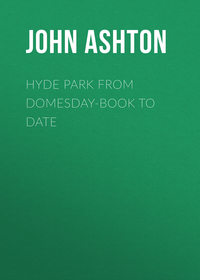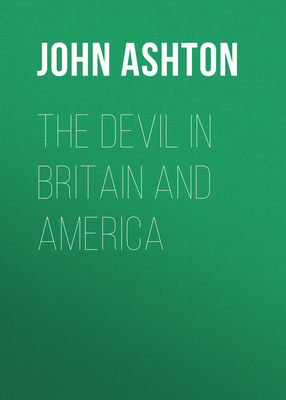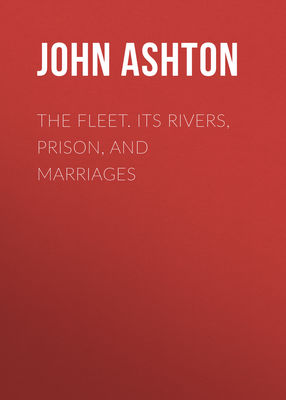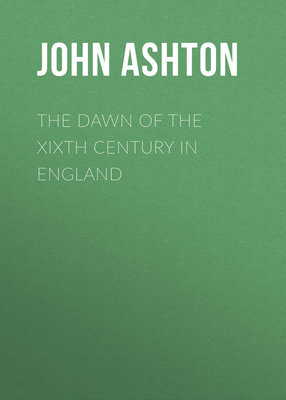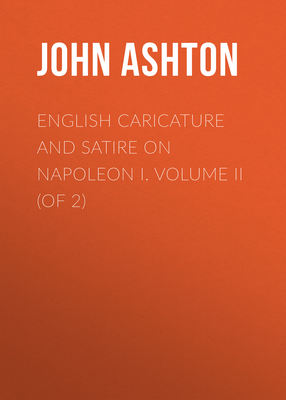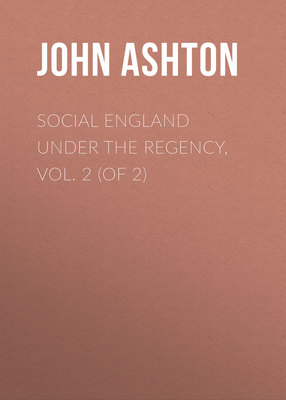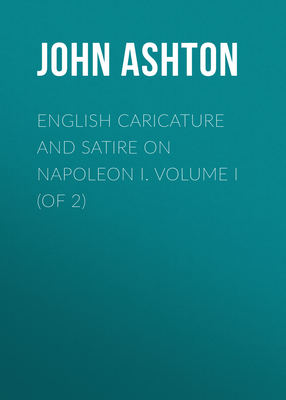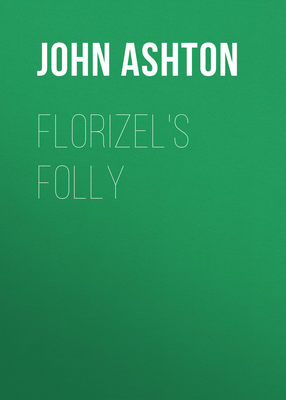Kitabı oku: «Hyde Park from Domesday-book to Date», sayfa 4
On the completion of the Serpentine, and the consequent road on its north bank, the cramped and confined Ring went out of fashion, as we learn in No. 56 of The London Spy Revived, December 6, 1736. “The Ring in Hyde Park being quite disused by the Quality and Gentry, we hear that the ground will be taken in for enlarging the Royal Gardens at Kensington in the next Spring.” But this was probably either only a rumour, or else Queen Caroline was better advised. The old name, however, still clung to the new road, and the carriage ride round the Park is still indifferently called the Ring or the Drive.
In the Library of the British Museum are two copies of an old ballad (circa 1670-5) entitled “News from Hide-Park,”30 a portion of which gives a graphic description of the Park at that time.
“One Evening, a little before it was dark,
Sing tan tara rara tantivee,
I called for my Gelding and rid to Hide-Parke
On tan tara rara tantivee:
It was in the merry Month of May,
When Meadows and Fields were gaudy and gay,
And Flowers apparell’d as bright as the day,
I got upon my tantivee.
“The Park shone brighter than the Skyes,
Sing tan tara rara tantivee:
With jewels and gold, and Ladies’ eyes,
That sparkled and cry’d come see me:
Of all parts of England, Hide-park hath the name,
For Coaches and Horses, and Persons of fame,
It looked at first sight, like a field full of flame,
Which made me ride up tan-tivee.
“There hath not been seen such a sight since Adam’s
For Perriwig, Ribbon and Feather,
Hide-park may be term’d the Market of Madams,
Or Lady-Fair, chuse you whether;
Their gowns were a yard too long for their legs,
They shew’d like the Rainbow cut into rags,
A Garden of Flowers, or a Navy of Flags,
When they all did mingle together.
“We talke away time until it grew dark,
The place did begin to grow privee;
The Gallants began to draw out of the Park:
Their horses did gallop tantivee,
But, finding my courage a little to come,
I sent my bay Gelding away by my Groom,
And proffered my service to wait on her home.
In her coach we went both tantivee.”
CHAPTER VII
Rotten Row, the King’s Old Road – The New King’s Road made and lighted – The Allied Sovereigns in the Park – The Park after the Peninsular War – The Duke of Wellington in the Park – The Queen and Royal Family in the Park.
If we look at the old map of Hyde Park, we shall find that what is now called Rotten Row was then termed The King’s Old Road and The King’s New Road, whence the generally accepted derivation of Rotten Row, from Route du Roi. Soon after the accession of William III., and his purchase of Kensington Palace, his route from St. James’s Palace to his residence lay through the Green Park and the King’s Road in Hyde Park, and, finding it dark at night, he had it lit by three hundred lamps, which, for the time, rendered it a fairyland of brilliancy; so much so, that Thoresby, in his diary (June 15, 1712), “could not but observe that all the way, quite through Hyde Park to the Queen’s Palace at Kensington, has lanterns for illuminating the road in the dark nights, for the Coaches.”
As we see, the New King’s Road was a trifle more direct than the old one, and skirted the Park. It was finished in 1737, as we find in The London Spy Revived (No. 183, September 23, 1737). “The King’s Road in Hyde Park is almost gravell’d and finished, and the Lamp Posts are fixed up; it will soon be open’d, and the old Road level’d with the Park.” The original intention was to do so, returf it, and once again make it a portion of the Park, but it was never carried out.
It would be absurd to chronicle even a portion of the people who have appeared in the Row and Ring: the list would simply consist of every person of note that lived in or visited London. It was used as a place for exercise and social intercourse, as we see in the two accompanying illustrations of the Row in 1793.
Another social group, date 1834, may also be given, but although they were well-known dandies of their day, they are unknown now, and their names are not worth recapitulating.
But never-to-be-forgotten visitors were the Allied Sovereigns, the Emperor of Russia and the King of Prussia, who were present at a grand review of all the regular troops, and most of the volunteers who resided in or near the metropolis, in Hyde Park on 20th June, 1814. With them were their brilliant staffs, while the Prince Regent, attended by the Duke of York, etc., acted as host to his Royal and Imperial guests.
Captain Gronow, in his Anecdotes and Reminiscences,31 gives the following description of “Hyde Park after the Peninsular War. That extensive district of park land, the entrances of which are in Piccadilly and Oxford Street, was far more rural in appearance in 1815 than at the present day. Under the trees cows and deer were grazing; the paths were fewer, and none told of that perpetual tread of human feet which now destroys all idea of country charms and illusions. As you gazed from an eminence, no rows of monotonous houses reminded you of the vicinity of a large city, and the atmosphere of Hyde Park was then much more like what God has made it, than the hazy, gray, coal-darkened half twilight of the London of to-day. The company, which then congregated daily about five, was composed of dandies and women in the best society, the men mounted on such horses as England alone then could produce. The dandy’s dress consisted of a blue coat with brass buttons, leather breeches, and top boots; and it was the fashion to wear a deep, stiff, white cravat, which prevented you from seeing your boots while standing. All the world watched Brummell to imitate him, and order their clothes of the tradesman who dressed that sublime dandy. One day, a youthful beau approached Brummell, and said, ‘Permit me to ask you where you get your blacking?’ ‘Ah!’ replied Brummell, gazing complacently at his boots, ‘my blacking positively ruins me. I will tell you in confidence; it is made with the finest champagne!’
“Many of the ladies used to drive into the Park in a carriage called a vis-à-vis, which held only two people. The hammer-cloth, rich in heraldic designs, the powdered footmen in smart liveries, and a coachman who assumed all the gravity and appearance of a wigged archbishop, were indispensable. The equipages were, generally, much more gorgeous than at a later period, when democracy invaded the parks, and introduced what may be termed a ‘Brummagem society,’ with shabby-genteel carriages and servants. The carriage company consisted of the most celebrated beauties, amongst whom were remarked the Duchesses of Rutland, Argyle, Gordon, and Bedford, Ladies Cowper, Foley, Heathcote, Louisa Lambton, Hertford and Mountjoy. The most conspicuous horsemen were the Prince Regent (accompanied by Sir Benjamin Bloomfield); the Duke of York, and his old friend Warwick Lake; the Duke of Dorset, on his white horse; the Marquis of Anglesea and his lovely daughters; Lord Harrowby and the Ladies Ryder; the Earl of Sefton and the Ladies Molyneux; and the eccentric Earl of Morton on his long-tailed grey. In those days, ‘pretty horsebreakers’ would not have dared to show themselves in Hyde Park; nor did you see any of the lower, or middle classes of London intruding themselves in regions which, with a sort of tacit understanding, were then given up, exclusively, to persons of rank and fashion.”
But there was one constant visitor well within the memory of man, belonging both to 1814 and the Park, which he used almost daily until his death. I mean the first Duke of Wellington, with whose sharply-defined features, blue frock coat, and white trousers, every Londoner was familiar.
The Queen, too, until the great grief of her life fell upon her, was a pretty constant visitor to the Park – in her younger days on horseback; and who has not seen the Princess of Wales and her children there? Although, as Captain Gronow justly observes, the frequenters of the Park are not so aristocratic as they used to be, and society generally is much more mixed.
CHAPTER VIII
The springs in Hyde Park – Used as water supply for Westminster – Horses in the Park – The Westbourne – Making the Serpentine – The “Naumachia” thereon – Satires about it – The Jubilee Fair.
Hyde Park has several springs of water, one of which was said to have been slightly mineral. The one shown in this illustration still exists, and the author of “The Morning Walk” thus eulogizes one: —
“But let my footsteps first pursue their course
To yon clear fountain, hid in shady grove,
And quaff the clear salubrious crystal brook,
Emblem of purity! when innocence
Partakes, and all the wakened sense restores.
O blessed Jordan! at thy limpid stream,
Gladly I mingle with the cheerful throng,
And drink the cup, and then renew my walk,
With strengthen’d nerves, down the delightful shade.”
Some of these springs were utilized for the supply of water outside the Park – but the larger quantity came from the Westbourne. Still, in 1620, the Dean and Chapter of Westminster had permission given them to use the water of four springs in Hyde Park for their benefit, and letters patent were granted to “Thomas Day, Gent. of Chelsea, to enable him to take the water from Hyde Park to the City of Westminster.” This, I take it, meant to utilize the Westbourne, as the Dean and Chapter had the springs: but both their privileges were annulled by the King’s Bench, as it was alleged that the ponds in the Park were, by these means, so drained that there was not enough water left for the wants of the King’s deer.
In the time of James I. there were eleven pools in the Park, and a glance at Roque’s map of 1747 will show that many were then still remaining; indeed, in the accompanying illustration of the Bathing House in 1794, we see a horse drinking at one of them. By this, we see that horses were turned out to grass in the Park. In 1751, grooms used to exercise their horses there, as did also a riding master named Faubert.
“See, too, the jolly courser, with his groom,
Expert, not like to him who Persia’s crown
Obtained, yet skill’d with upright crest and arm,
Compacted knee, to give the rein and bitt
Their motion due, his flight retarding not.
– Next Faubert view with graces of menage,
And troops of horse in strictest motion wheel.”
From the heights of Hampstead spring several small streams, such as the Fleet, the Brent, and the West Bourne, probably so called to distinguish it from St. Mary le bourne, which was further east. Roque’s map shows its position with regard to the Serpentine, but, before that misnamed lake was made, it ran right through the Park from north to south, leaving the Park about Albert Gate, where was a bridge, from which Knightsbridge takes its name. Then it flowed by what are now William Street, Lowndes Square, and Chesham Street, falling into the Thames near Ranelagh.
Queen Caroline, wife to George II., conceived the idea of utilizing this little stream, and making it into a lake, and, as it was supposed that she was expending her own money on this work, no objection was raised to her so doing, but it is said that at her death she left the King to pay a sum of no less than £20,000 on account of it. We learn when it was commenced from Read’s Weekly Journal, or British Gazetteer, Saturday, September 26th, 1730. “Next Monday, they begin upon the Serpentine River, and Royal Mansion in Hide-Park: Mr. Ripley is to build the House, and Mr. Jepherson to make the River under the Directions of Charles Withers, Esqre.” This latter gentleman, who was Surveyor General of Woods and Forests, died shortly before the Serpentine was finished, probably in 1733, when his successor was appointed; and in May, 1731, it was deep enough, in part, to allow two small yachts upon it. Its cost was estimated at £6000 – but a portion of that (£2500) had to go as compensation to the Chelsea Water Works Company, who held a 99 years’ lease, granted to one Thomas Haines, in 1663, whereby, on annual payment of 6s. 8d., he had command of all the springs and conduits in the Park.
The water supply for the Serpentine came from the Westbourne, until, in the course of time, owing to the extension of building, the houses around draining into it, its water became too foul for the purpose, and, in 1834, it was cut off, and connected with the sewer in the Bayswater Road; and the supply thus lost is made good by the Chelsea Water Works, who pump in water at the Kensington Gardens end, and the overflow at the very pretty Dell forms a striking feature in the landscape gardening of the Park. Formerly, as we see in Roque’s map, the overflow was conducted into a pool, which was bridged over by the King’s Old Road.
The Serpentine was not utilized for any purpose until August 1st, 1814, when a national rejoicing called “The Jubilee” was held in the Park, to celebrate the conclusion of peace with France, and the celebration of the centenary of the accession of George I. There were to be illuminations, fireworks, and balloon ascents in St. James’s and the Green Parks, and in Hyde Park a fair, and a “Naumachia,” or sea-fight, which was somewhat appropriate, as the famous Battle of the Nile was fought on August 1st, 1798.
The mimic three-deckers and frigates were necessarily small, and they were made out of ships’ barges at Woolwich, and great was the chaff made about this “liliputian navy.” Here are some skits thereon: —
“John Bull, the other day, in pensive mood,
Near to the Serpentine Flotilla stood;
His hands were thrust into his emptied pockets,
And much of ships he muttered, and of rockets;
Of silly Fêtes – and Jubilees unthrifty —
And babies overgrown, of two and fifty;32
I guess’d the train of thought which then possess’d him,
And deem’d th’ occasion fit, and thus address’d him:
“ ‘Be generous to a fallen foe,
With gratulations meet,
On Elba’s Emperor bestow
Thy Liliputian fleet:
“ ‘For, with his Island’s narrow bounds,
That Navy might agree,
Which, laugh’d at daily here – redounds
In ridicule to thee.’
“Says John, ‘Right readily I’ll part
With these, and all the gay things,
But it would break the R – ’s heart
To take away his play things.’ ”
Or take the two following distiches: —
“A simple Angler, throwing flies for trout,
Hauled the main mast, and lugg’d a First Rate out.
“A crow in his fright, flying over the Fleet,
Dropped something, that covered it all, like a sheet.”
In contemporary accounts, the “Naumachia” was generally very summarily dismissed, and the following is, perhaps, one of the best of them.
“Between eight and nine o’clock, the Grand Sea Fight took place on the Serpentine River, where ships of the line, in miniature, manœuvred and engaged, and the Battle of the Nile was represented in little. Of this mock naval engagement on the great Serpentine Ocean, it would be extremely difficult to give any adequate description. It is, perhaps, sufficient to observe that it was about on a par with spectacles of a similar nature, which have been frequently exhibited at the Theatres… We were as heartily glad when the cockle-shell fight was over, as we had been tired of waiting for it. We were afraid, at one time, whether it would have neither beginning nor end. Indeed, there had been a wretched skirmish between four and five in the afternoon, between an American and an English frigate,33 at the conclusion of which, the English colours were triumphantly hoisted on the rebel Yankee… At a signal given, the fireworks in the Green Park were let off, and four of the little fleet in the Serpentine were set on fire. The Swans screamed, and fluttered round the affrighted lake.”
Such an opportunity for his satirical pen could not be missed by C. F. Lawler, the then pseudo Peter Pindar, and he wrote thereon: “Liliputian Navy!!! The R – t’s Fleet, or John Bull at the Serpentine.” – “The P – e’s Jubilee.” “The R – l Showman.” “The R – l Fair, or Grande Galante Show.” And, on the sale of the Temple of Concord, which had been erected in the Green Park: “The Temple knock’d down: or R – l Auction. The last lay of the Jubilee.” They are mostly scurrilous and spiteful, but from the first of them I take the following: —
“Now to Hyde Park the crowds repair,
To mark the wonders of the fair;
To view the long extended line,
The glory of the Serpentine.
“Now sounds the Cannon, near and far,
The signal for the naval war,
The cockle fleet their flounder sails
Now spread to catch the whisp’ring gales.
“Now meet the rival ships; now rave
The echoing thunders o’er the wave;
Within the banks the eels retire,
To shun the fury of the fire.
“The startled pike lifts up his head,
Curious, tho’ paralyz’d with dread;
Snatches a momentary peep,
Then dives below the nether deep.
“And all the realm of fish – roach, dace,
Perch, minnow, chub, and tench, and plaice,
Far from the scene of havoc fly,
And seek the stream’s extremity.
“Whisking his tail a flying eel
Struck a three decker’s cockle’s keel
(The vessel was the navy’s boast,
And lay at anchor near the coast).
“Ungovernable from the stroke,
Quick from her netting-pin she broke;
With rude concussion struck the shore,
Then bilged, and sank, to ride no more.
“Boats from the cockle-shells at hand
Were quickly lower’d down and mann’d,
The gallant mariners to save —
To snatch them from a wat’ry grave.
“Scar’d at a spectacle so shocking,
Each ’prentice boy doff’d shoe and stocking,
Wading knee-deep, with shorten’d breath,
To snatch the struggling tars from death.
“An angler threw his fishing-line
Into the ruffled Serpentine;
Hook’d up the ship with no small pain,
And dragg’d her from the mimic main.
“See the tri-coloured cockles run,
The gaping crowd enjoy the fun;
Some still maintain a running fight
Some strike, some sink to endless night!
“ ‘Lord! ’twas a glorious fight,’ says Dick;
‘Monsieur at last got devilish sick!’
‘Then ’twas a real fight,’ cry’d Sam;
‘Why, lad, I thought it all a sham!’
“ ‘Real! no, no!’ says Jack, ‘you fool!
’Twas all a bit of ridicule;
To show us lubbers, I’ve a notion,
How things are done upon the ocean.’ ”
There was another satirical poem on this Naumachia, entitled “An Extraordinary Gazette, containing dispatches from Admiral Squib, giving a detailed account of A Great Naval Victory obtained over the combined fleets of France and America, in the Great Serpentine Sea, on the 1st August, 1814,” – a small portion of which I transcribe.
“Now since, as you will understand,
This mighty Sea is quite inland,
It to their Lordships will appear
Strange, how the d – l we got here.
…
A council call’d, some doubts were made,
Whether the ships could be convey’d;
Which I, who knew my men, dispell’d,
And every thought of failure quell’d.
Then quickly issued my command
The men should take them overland;
And such as were too large to drag on,
Should be convey’d upon a waggon.
The plan was hail’d with rapt’rous glee,
With double grog, and three times three.
“Our topmasts struck – the rigging stow’d —
The guns were sent off on the road —
And, as for shot and Congreve rockets,
The sailors took them in their pockets.
All hands were now put to the oar,
To tow the men-of-war ashore;
Which done – it cost but little pains —
The great exertion yet remains,
To lift their vast and pond’rous keels,
And ship them safely on the wheels;
Which, after much fatigue, at length
Was done by dint of manual strength.
All this achiev’d, they mov’d away
By help of horse-artillery.34
In future times ’twill scarce be creded
How well this novel plan succeeded.
And oh! the sight was worth a treasure,
And would have given their Lordships pleasure,
To see with what determined zeal
The sailors strove for the public weal.
Some took a bowsprit– some a mast—
Some held a hull by handspikes fast;
While others, not less glad than able,
Lash’d it safely with a cable.
But one, than all the rest much bolder,
Carried a fire-ship on his shoulder.
The whole arriving on the strand,
Without an accident on land,
Our fetter’d barks were soon untied,
And launch’d into the ocean wide;
With masts and rigging re-equipp’d,
And guns and ammunition shipp’d;
We now were fit to put to sea,
And meet the dastard enemy.
And for long time we sail’d about,
To find the slinking Frenchmen out;
Until we met near Rotten shore,
As I have said herein before.”
The accompanying illustration is from a satirical print by George Cruikshank, re the Jubilee, called “The Modern Don Quixote, or the Fire King.”
There were pictorial caricatures of this Naumachia, of course, but, judging from two contemporary prints of it in the Crace collection (Port. ix. 96, 97), in the British Museum, it must have been a very pretty sight, only, naturally, on a very small scale.
Another attraction in Hyde Park, at this Jubilee, was a fair, with its shows by Richardson, Reede, Saunders, and Gingel; – also Polito’s wild beasts were on exhibition. There were drinking booths, with taking signs, such as “The Duke of Wellington,” “The Vetteran Prince Blucher,” “The Prince Regent,” etc.; dancing, singing and refreshment booths, and – being warm weather – eating and drinking could be indulged in in the open air. This fair was kept up after the Jubilee with the additional attractions of E.O. tables—black and white cocks—dice tables, and a game with dice called under and over seven: nor did the police even make a show of stopping this gambling. There were donkey racing, jumping in sacks, running for smocks, etc., and there were printing presses, where, on payment, people had the privilege of themselves pulling off a typographical souvenir of the fair. Nay, it was even contemplated to print a Jubilee Fair Journal.
It was anticipated that this fair would last until the 12th, and so it possibly might have done, had it been conducted with anything like decency and order; but, as these were conspicuously absent, Lord Sidmouth, Secretary of State for the Home Department, ordered it to be closed on the night of Saturday the 6th. This order the booth keepers petitioned against, on the plea that, on the strength of its being open for a longer time, they had laid in a large stock of provisions, liquor, toys, etc., which would be thrown upon their hands. Lord Sidmouth’s order not being enforced, they kept on, so that it was found necessary to issue another – which was acted on – and the fair came to an end on the night of the 11th.
A contemporary newspaper, speaking of it, says: “Never, within the memory of man, has there been witnessed such scenes of drunkenness and dissipation as these fooleries have given rise to, and the misery they have brought upon thousands is extreme. A report from the pawnbrokers would be an awful lesson to governments, how they encourage such riot. Since the delirium, from the example of the highest quarter, began, the pawnbrokers have more than trebled their businesses; clothes, furniture, and, worst of all, tools, have been sacrificed for the sake of momentary enjoyment; industry of every kind has been interrupted, and many hundreds of starving families will long have to remember the æra of the Park Fêtes.”
A notice of this Jubilee may well close with an “Epigram on the P – R – ’s expressing a wish for the continuance of the Fair in Hyde Park.
“The R – , we have oft been told,
Prefers the Fair when stout and old;
Now, here we’ve cause to think him wrong,
For liking any Fair too long.”
